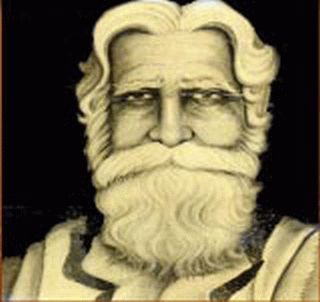- Sushruta
Infobox Medical Person
name = Sushruta
box_width =
image_width = 250px
caption = The surgeon Sushruta completed his work "Sushruta Samhita" inVedic Sanskrit by the6th century BCE .
birth_date =
birth_place =India
death_date =
death_place =
profession =Surgeon ,Physician
specialism =Plastic Surgery ,Cataract surgery
research_field = Diseases (cure and origin) and surgical instruments.
known_for =Rhinoplasty
years_active =
education =
work_institutions =
prizes =
relations =Sushruta was a surgeon and teacher of
Ayurveda who flourished in the Indian city of Kashi by the 6th century BCE.Dwivedi & Dwivedi (2007) ] The medical treatise "Sushruta Samhita "—compiled inVedic Sanskrit —is attributed to him. The "Sushruta Samhita" contains multiple detailed references to diseases and medical procedures.Life
Sushruta served as a surgeon in Kashi, where he practiced medicine and identified the treatment and origin of several diseases. [Lock etc., page 420] The earliest literature of India is dated to before 1400 BCE and
Brahmic family of scripts appeared by the 3rd century BCE. [Salomon, Richard. (2003). "Writing Systems of the Indo-Aryan Languages," in "The Indo-Aryan Languages", 67–103. Edited by George Cardona and Dhanesh Jain. New York: Routledge. ISBN 0700711309.] Greater diversity is visible in literary works during the 1st millennium BCE,J.A.B. van Buitenen (2008). "Indian literature." Encyclopedia Britannica 2008] which is when the medical treatise "Sushruta Samhita" makes its appearance. Sushruta's work was compiled by 6th century BCE. Sushruta is familiar with the religious text "Atharva-veda "Kutumbian, page I] and his work finds mention in the Brāhmaṇas literature, specifically "Shatapatha Brahmana ".Kutumbian, page XXXI]Contributions
Dwivedi & Dwivedi (2007)— on the work of the surgeon Sushruta—write:
The main vehicle of the transmission of knowledge during that period was by oral method. The language used was
Sanskrit — the vedic language of that period (2000-500 BC). The most authentic compilation of his teachings and work is presently available in a treatise called "Sushruta Samhita". This contains 184 chapters and description of 1120 illnesses, 700 medicinal plants, 64 preparations from mineral sources and 57 preparations based on animal sources.Though the contributions of Sushruta are mainly in the field of Plastic and
Cataract surgery , a number of his other contributions to medicine are listed below:Legacy
The earliest surviving excavated written material which contains the works of Sushruta is the "
Bower Manuscript "—dated to the4th century CE, almost a millennium after the original work. [Kutumbian, pages XXXII-XXXIII]The medical works of both Sushruta and
Charak were translated intoArabic language during theAbbasid Caliphate (750 CE). [Lock etc., page 607] These Arabic works made their way intoEurope via intermediaries. InItaly the Branca family ofSicily andGaspare Tagliacozzi (Bologna ) became familiar with the techniques of Sushruta.Lock etc., page 607]British physicians traveled to India to see
Rhinoplasty being performed by native methods.Lock etc., page 651] Reports on Indian Rhinoplasty were published in the "Gentleman's Magazine " by 1794.Joseph Constantine Carpue spent 20 years in India studying local plastic surgery methods. Carpue was able to perform the first major surgery in thewestern world by 1815.Lock etc., page 652] Instruments described in the "Sushruta Samhita" were further modified in the Western World.Notes
References
* Aufderheide, A. C.; Rodriguez-Martin, C. & Langsjoen, O. (1998). "The Cambridge Encyclopedia of Human Paleopathology". Cambridge University Press. ISBN 0521552036.
* Dwivedi, Girish & Dwivedi, Shridhar (2007). [http://medind.nic.in/iae/t07/i4/iaet07i4p243.pdf "History of Medicine: Sushruta – the Clinician – Teacher par Excellence"] . National Informatics Centre (Government of India).
* Kearns, Susannah C.J. & Nash, June E. (2008). "leprosy". Encyclopedia Britannica.
* Kutumbian, P. (2005). "Ancient Indian Medicine". Orient Longman. ISBN 8125015213.
* Lock, Stephen etc. (2001). "The Oxford Illustrated Companion to Medicine". USA: Oxford University Press. ISBN 0192629506.
Wikimedia Foundation. 2010.
